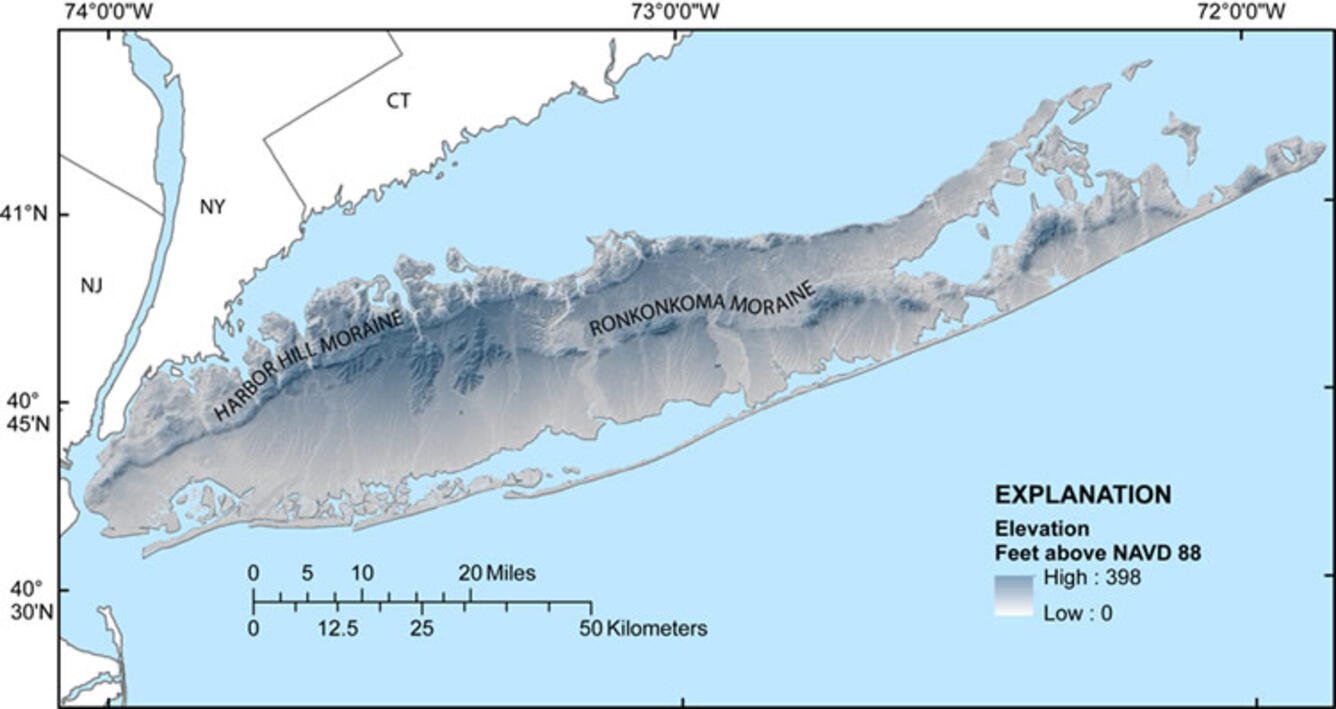Blame It on the Ice Age
Like many of us in PPTC, I imagine, I have a love-hate relationship with Battle Pass Hill—also known to us as Zoo Hill. I hate running up that hill, but I love that doing so makes me strong and well prepared for the hills featured in so many of New York City’s road races.
Runners in the PPTC Cherry Tree 10M charge up Battle Pass Hill three times. Image used with permission of Cheer Everywhere!
We have the last ice age to blame—or thank, if yours is a generous spirit—for the hills of Brooklyn. Through the Pleistocene Epoch, continental ice sheets expanded and retreated dozens of times, carrying and smoothing rocks and eventually depositing them miles from where they had been picked up. The Laurentide ice sheet, which covered much of Canada and the northern United States, reached its greatest extent in the most recent glacial period about 20,000 years ago. Its southernmost boundary crossed Brooklyn. To the north of this boundary lay a mantle of ice as thick as 2,000 feet or more; to the south lay a coastal plain of tundra and meltwater streams. When the glacier began to melt and retreat, it left behind a pile of rubble that it had pushed to the boundary. This pile of rock debris is called a terminal moraine.
Battle Pass Hill is part of one of the two terminal moraines that form the two forks of Long Island. The Ronkonkoma Moraine, the older of the two, forms the south fork, and the Harbor Hill Moraine, which defines the hilly landscapes of Green-Wood Cemetery and Prospect Park, forms the north fork. The Harbor Hill Moraine also continues west to Staten Island; the Narrows were formed about 13,000 years ago when glacial floodwaters streamed down the Hudson and broke through the moraine.
Map of Long Island via the United States Geological Survey, in the public domain
The incorporation of the terminal moraine in Prospect Park is no accident. With the idea in mind that Brooklyn, like Manhattan, should have a central park, in April 1859 the New York State legislature passed an act authorizing “the selection and location of certain grounds for Public Parks, and also for a Parade Ground for the city of Brooklyn.” “That piece of land situated on what is commonly called Prospect Hill” was among the recommended sites, and the opening paragraph of a 1861 report from engineer Egbert Viele, who provided an initial design for the park, explains that there is “no other point from which the eye can embrace so wide a field of marine and inland scenery” than from this land located on the terminal moraine. The “panoramic view” from Prospect Hill encompasses “the cities of New York and Brooklyn, the inner and outer harbors, with their fleets of ships and steamers, a large portion of New Jersey, Staten Island and Long Island, with the Atlantic ocean beyond, stretching far away in the distance.”
The view as it appeared in 1860 looking west from Prospect Hill across land proposed for the new park extended all the way to New Jersey. Image from Annual reports of the Brooklyn Park Commissioners, 1861–1873, in the public domain
Viele’s terrible plan—in which Flatbush Avenue bisected the park—was, fortunately for us, abandoned in favor of a plan by Frederick Law Olmsted and Calvert Vaux. Because of its location northeast of Flatbush Avenue, Prospect Hill was not included in their plan, though the plan incorporated several other hills, including, of course, Battle Pass Hill.
Sources
Broad, W. J. (2018, June 5). How the ice age shaped New York. The New York Times. https://www.nytimes.com/2018/06/05/science/how-the-ice-age-shaped-new-york.html
Brooklyn, N.Y. (1873). Annual reports of the Brooklyn Park Commissioners, 1861–1873. Brooklyn Park Commissioners.
McCully, B. (2018, November 12). Ice age New York. New York nature. https://www.newyorknature.us/ice-age-new-york/
New York Water Science Center. (2017, June 7).Long Island topography. https://www.usgs.gov/centers/new-york-water-science-center/science/long-island-topography
Written by: Rachael Nevins (she/her)
Photos by: As credited in captions
Produced by: Rachael DePalma (she/her)
PPTC is a diverse and supportive team. We want to celebrate the diversity of our club and membership. We welcome and encourage everyone to share their stories with us.



